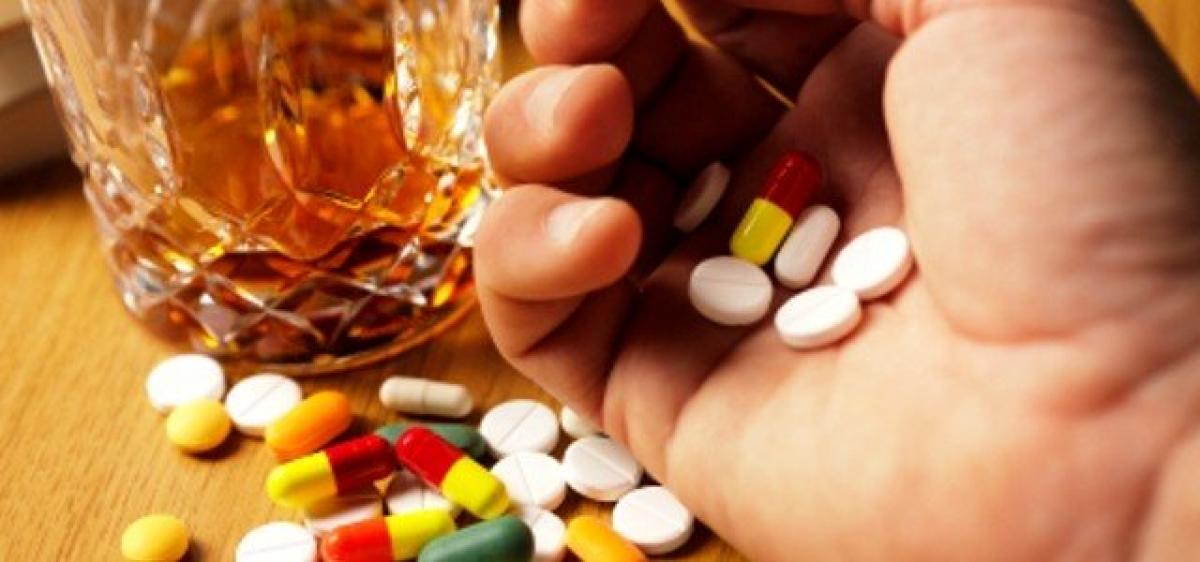Live
- Fire breaks out at petrol pump
- Facial recognition-based attendance in Sectt from today
- TGPSC to be restructured on par with UPSC
- Gabba pitch to have pace and bounce
- Not taking a break after Olympics left me emotionally drained
- SSC public exams from March 17 to 31
- Pathetic state of Zoo Park-Aramghar underpass turning deadly for commuters
- Losses galore for PCB if it pulls out of Champions Trophy over hosting deadlock
- Govt to support plot owners in build homes
- Bumrah maintains No.1; Brook displaces Root
Just In

In this modern generation era, drug and alcohol is very much easily accessible anywhere and anyhow.
In this modern generation era, drug and alcohol are very much easily accessible anywhere and anyhow.
But what is an addiction? and how does this actually start? in this short essay, we would explain you in detail.
The word “addiction” is derived from a Latin term for “enslaved by” or “bound to.” Anyone who has struggled to overcome an addiction—or has tried to help someone else to do so—understands why.
Addiction exerts a long and powerful influence on the brain that manifests in three distinct ways: craving for the object of addiction, loss of control over its use, and continuing involvement with it despite adverse consequences.
For many years, experts believed that only alcohol and powerful drugs could cause addiction. Neuroimaging technologies and more recent research, however, have shown that certain pleasurable activities, such as gambling, shopping, and sex, can also co-opt the brain.
Although a standard U.S. diagnostic manual (the Diagnostic and Statistical Manual of Mental Disorders, Fourth Edition or DSM-IV) describes multiple addictions, each tied to a specific substance or activity, a consensus is emerging that these may represent multiple expressions of a common underlying brain process.
Nobody starts out intending to develop an addiction, but many people get caught in its snare. Consider the latest government statistics:
Nearly 23 million Americans—almost one in 10—are addicted to alcohol or other drugs.
More than two-thirds of people with addiction abuse alcohol.
The top three drugs causing addiction are marijuana, opioid (narcotic) pain relievers, and cocaine.
In the 1930s, when researchers first began to investigate what caused addictive behavior, they believed that people who developed addictions were somehow morally flawed or lacking in willpower. Overcoming addiction, they thought, involved punishing miscreants or, alternately, encouraging them to muster the will to break a habit.
The scientific consensus has changed since then. Today we recognize addiction as a chronic disease that changes both brain structure and function. Just as cardiovascular disease damages the heart and diabetes impairs the pancreas, addiction hijacks the brain. This happens as the brain goes through a series of changes, beginning with recognition of pleasure and ending with a drive toward compulsive behavior.
The brain registers all pleasures in the same way, whether they originate with a psychoactive drug, a monetary reward, a sexual encounter, or a satisfying meal. In the brain, pleasure has a distinct signature: the release of the neurotransmitter dopamine in the nucleus accumbens, a cluster of nerve cells lying underneath the cerebral cortex (see illustration). Dopamine release in the nucleus accumbens is so consistently tied with pleasure that neuroscientists refer to the region as the brain’s pleasure center.
All drugs of abuse, from nicotine to heroin, cause a particularly powerful surge of dopamine in the nucleus accumbens. The likelihood that the use of a drug or participation in a rewarding activity will lead to addiction is directly linked to the speed with which it promotes dopamine release, the intensity of that release, and the reliability of that release.
Even taking the same drug through different methods of administration can influence how likely it is to lead to addiction. Smoking a drug or injecting it intravenously, as opposed to swallowing it as a pill, for example, generally produces a faster, stronger dopamine signal and is more likely to lead to drug misuse. lets all together join our hands to a boundless chain to SAY NO TO DRUGS!

© 2024 Hyderabad Media House Limited/The Hans India. All rights reserved. Powered by hocalwire.com







